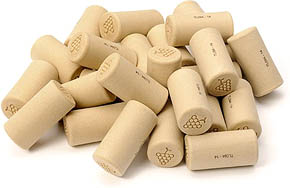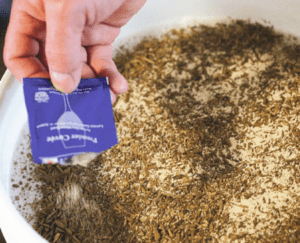 This is Part II of a 2 part series on wine oxidation. Part I covers the effects of oxidation. Part II, this part, covers how to avoid it.
This is Part II of a 2 part series on wine oxidation. Part I covers the effects of oxidation. Part II, this part, covers how to avoid it.
The first thing I’m going to say about avoiding oxidation might not be what you’d expect, but it’s important to know. Make sure the fermentation has plenty of oxygen in the beginning — particularly the first 2 to 3 days of fermentation. This is the time when the little packet of wine yeast you add to the must needs to multiply itself into a colony that is 100 to 200 times its original size. The wine yeast desperately needs oxygen to accomplish this.
Oxidation is not of a huge concern at these beginning stages of fermentation, because the CO2 that is being produced is saturated within the wine, keeping oxygen (air) out of it. If the CO2 was not in the wine, oxygen would then be capable of being saturated.
It is later, when the fermentation begins to slow down, that controlling air exposure always needs to be considered. The CO2 releases as a gas and dissipates giving an opening for oxygen to take over.
1. RACK YOUR WINE CAREFULLY
Racking is a time when excessive oxygen can be introduced into the wine, but this is not going to happen to you because you are going to do some simple things that are going to keep this oxidation under control.
The first thing is to eliminate the splashing. When you splash a wine you are increasing the wine’s ability to soak up oxygen. When you rack or siphon a wine, do it in a way that does not splash. I like to make sure that the siphon hose is all the way to the bottom of the fermenter being filled. I fill the fermenter from the bottom-up, so to speak.
If the fermentation has already completed at the time of racking, the second thing you should do is add a dose of Sodium Metabisulfite. The SO2 from the sulfites will help to drive out any oxygen that may have made its way into the wine.
2. ELIMINATE ANY HEAD-SPACE THAT’S WITH YOUR WINE
If the fermentation has completed, there is no longer any CO2 gas coming off the wine to protect it. Because of this you want to avoid having large amounts of head-space in your fermenter with your wine. Having too much head-space is not a problem for a week or so, but anything longer than this should be avoided. There are two common ways to handle this:
- Change Fermenters: Move the wine from a bucket fermenter to an appropriately-sized carboy., something that has a narrow neck. Make sure the wine is up into the neck of the carboy. You may even want to use a series of glass gallon jugs for this purpose. If you have 4 gallons of wine, a 5 gallon carboy is not a good option. Four 1 gallon glass jugs would be better.
- Replace The Head-Space: Fill-up the head-space in the fermenter. This can be done by adding a similar wine to the batch. This could either be a commercially made wine or a wine you made yourself. This method would be appropriate if the head-space were small — a quart or less. Another way is to use glass marbles to fill the head-space. It is important that the glass marbles be sanitized first. Be careful not to crack your carboy with the marbles as you put them into your wine fermenter.
3. USE PROTECTIVE INGREDIENTS THAT FIGHT OXIDATION
Sulfites should always be used before bottling your wine. Also, Ascorbic acid should be used in some cases where oxidation is very likely.
- Sulfite: It is important to treat your homemade wines with a sulfite such as Sodium Metabisulfite or Campden Tablets before bottling. This will go a long way towards fighting oxidation. The sulfites also have the added benefit of squashing the growth of any microorganisms, including acetobacter which is what causes a wine to turn to vinegar.
- Ascorbic Acid: Some wines are more susceptible to oxidation than others. White wines in general are more sensitive than reds to oxidative forces. And more specifically apple and pear wines are very sensitive to oxidation. We recommend adding ascorbic acid to these to wines. It raises the acid level of the wine without raising the acidic flavor or tartness of the wine. Having this higher level of acid in your wine will help to slow the effects of oxidation.
4. TAKE CARE WHEN STORING YOUR WINE
Even if the oxygen level of your wine is very low, oxidation can start to adversely affect your wine, if given enough time. There are two external factors that can control how fast your wine will respond to oxidation. One is light the other is heat. Have too much of either, and you will speed up the oxidative process.
- Light: If you bottle your wines in green wine bottles you are already doing something to help keep light exposure down. The green filters out much of the UV rays which is the actual catalyst for oxidation. But beyond this, how about keeping it simple. Store your wines in a dark place then you won’t have to worry about what color of wine bottles.
- Heat: You need to keep the wine’s temperature from being too hot. Almost all wine experts agree that the optimal temperature for storing wine is 55º F. But understand that if you can only keep that wine at 60º or 70º F. that’s still several times better than 80º F. So, just do the best you can with what you’ve got.
There you have it: The basics of keeping your homemade wines from succumbing to the effects of oxidation. They are all really very simple things to do. Practice them and your wines will live a long and healthy life.
———————————————————————————————————
Ed Kraus is a 3rd generation home brewer/winemaker and has been an owner of E. C. Kraus since 1999. He has been helping individuals make better wine and beer for over 25 years.


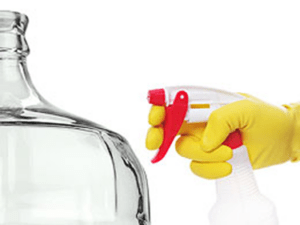
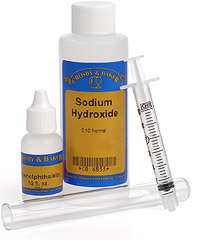
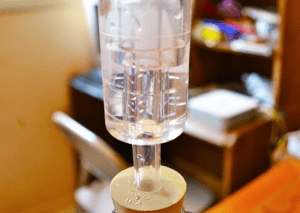
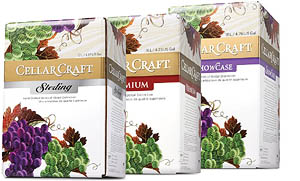 We’ve got some great news that we can’t wait to pass along! The new wine making juices are here! We are very excited to announce that we have added a new brand of a wine making juice to our already extensive selection of wine making juices.
We’ve got some great news that we can’t wait to pass along! The new wine making juices are here! We are very excited to announce that we have added a new brand of a wine making juice to our already extensive selection of wine making juices.
